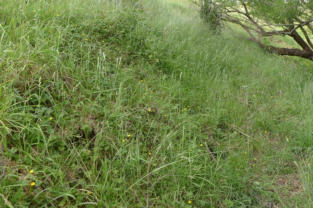



Giant Gippsland Earthworm
Learn More
•
Fact Sheet 1: Giant Gippsland Earthworm - recognising habitat on your property
If you would like to learn more about the Giant Gippsland Earthworm (GGE), or have any queries, please
contact us
.

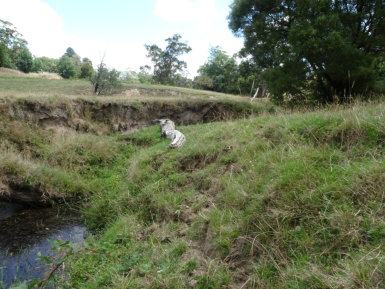
About The Giant Gippsland Earthworm (GGE)
Click any image to enlarge
Question 1:
A snake or a worm?
Question 2:
Is my worm bigger than yours?
Question 6:
How long do they live? (or How long is a piece of string?)
Question 7:
Are worms good for the farm?
Question 3:
What is the range of GGEs within Gippsland?
Question 4:
Where do I look for GGE habitat on my farm?
Question 5:
How can I detect GGE colonies on my farm?
Click any image to enlarge
Website by VP-IT
All photographs © Dr. Beverley Van Praagh, Invert-Eco unless otherwise stated. No image may be saved, copied, reproduced or distributed without prior permission from the copyright owner.
Email: info@giantearthworm.org.au


Giant Gippsland Earthworm
Giant Gippsland Earthworm (GGE)
• About GGEs • Take The ‘Do I Have Worms On My Property?’ Test • The Secret Sex Lives Of Worms • What Threats Do GGEs Face?

About The Giant Gippsland Earthworm
(GGE)
It was during the late 1870s, when railway workers were
surveying the Moe to Bunyip section of rail line around
Brandy Creek, that this strange creature was unearthed.
Having never seen an earthworm of this size, they mistook
it for a snake! It wasn’t until it arrived at the University of
Melbourne where Professor McCoy examined it and
recognised it as giant species of earthworm. Professor
McCoy went on to describe it and name it Megascolides
australis.
All photographs © Dr. Beverley Van Praagh, Invert-Eco unless otherwise stated.
No image may be saved, copied, reproduced or distributed without prior
permission from the copyright owner.
Email: info@giantearthworm.org.au
Website by VP-IT
Q1. A snake or a worm?
Giant earthworms are found in several states of Australia
and from many countries around the world. Just as
fisherman like to exaggerate the size of the fish they catch,
there are many exaggerated claims about the size of
worms. Giant Gippsland Earthworms (GGEs) have been
reported as being over 3 m in length. Scientists studying the
worm over the past 30 years suggest the average length of
an adult worm is around 1 m and weighs 200 g. However,
worms 2 m long and weighing up to 400 g have been found.
Part of these exaggerated claims may come from the fact
that worms can expand and contract, just like a concertina!
A worm that is stretched or relaxed can easily double its
length, perhaps giving rise to reports of these ginormous
worms.
Q2. Is my worm bigger than yours?
Q3. What is the range of GGEs within Gippsland?
The only place GGE are found in the world is approximately
40,000 ha of South and West Gippsland, Victoria. This area
lies roughly between Buln Buln to the north, Jumbunna to
the south, Almurta to the west, and Mt Eccles to the east.
Within this range, worms are usually limited to small, widely
dispersed pockets of suitable habitat along creek banks and
south facing slopes.
Q4. Where do I look for habitat on my farm?
GGEs have very specific requirements that mean they are
usually only found in small pockets of suitable habitat.
Colonies may be small, with only a few individuals, to larger
colonies where many hundreds of worms can be found.
Colonies are found in two main habitats:
1.
along the banks and terraces of streams and drainage
channels, and
2.
steep, south-facing slopes, often with terracettes.
Sites with GGE colonies generally have well-draining blue-
grey clay soils or red-brown clay loam soils that, critically,
remain moist year-round. GGE cannot survive in water-
logged soils or areas subject to seasonal flooding.
Q5. How can I detect GGE colonies on my farm?
As GGE live their lives entirely underground, detecting
colonies can be difficult. The best place to start is by
searching areas where GGE habitat is more likely to occur
(see question 4). Searching for areas along creek-banks
where buttercup and yabby mounds are present or south-
facing slopes with terracettes can help identify wetter sites
that may support GGE habitat.
Please click play below to listen to gurgling sound
Q6. How long do worms live?
GGE are difficult to study because of their life underground.
Scientists have not been able to replicate their natural
environment in captivity so the answers to many questions
such as life span are elusive. Earthworms typically live only
a few months because of the many environmental threats
they face. However, some worms have been observed to
live for 10 years in a protected environment. Given
their life deep in the soil, their size and slow
growth rate and the fact that colonies usually
have many more adults than young, it is
very likely that these worms would
outlive your average household pet,
maybe even your grandmother!
Q7. Are worms good for the farm?
Earthworms are an important part of the soil ecosystem
and play a pivotal role in maintaining the productivity of our
soils. The burrowing and feeding activity of earthworms
have numerous beneficial effects on overall soil quality.
They help improve soil structure and soil chemical and
biological properties by contributing to an increased
nutrient availability, better drainage, and a more stable soil
structure, all of which help improve farm productivity.
Perhaps the high productivity of farmland in South
Gippsland maybe attributable in part to these giant
earthworms!


Buttercups (Ranunculus sp.)
Yabby Mounds (Engaeus sp.)
One method that can be easily used is to walk over areas of
possible habitat and listen for the gurgling sound that
worms make when moving through their moist burrows.
This is best done several times in winter and spring when
worms are in the parts of their burrow systems that are
closest to the soil surface.
Click any image to enlarge

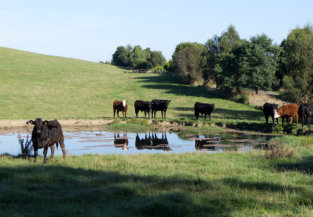
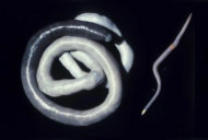
Giant
Gippsland
Earthworm
European
Earthworm



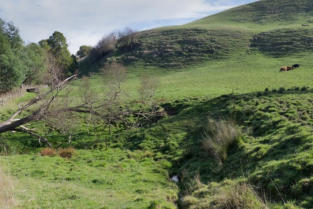
Learn More
•
Fact Sheet 1: Giant Gippsland Earthworm
- recognising habitat on your property
If
you
would
like
to
learn
more
about
the
Giant
Gippsland
Earthworm
(GGE),
or
have
any
queries,
please
contact us
.























![Close [x]](index_htm_files/close.png)







